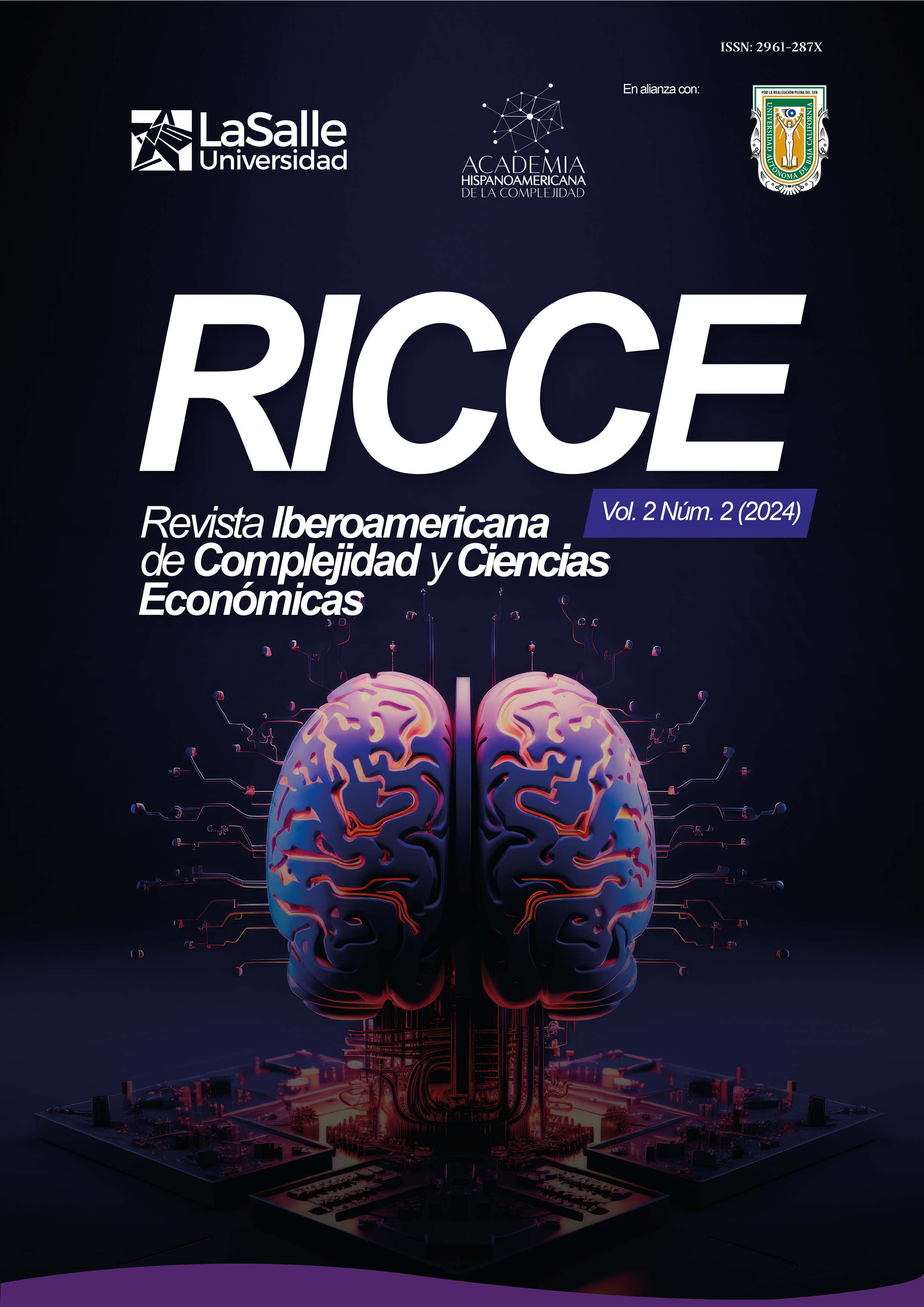THE PROBLEM OF ETHICS: THE COEXISTENCE. Ethics and Artificial Intelligence
Abstract
This article claims that the main issue posed by artificial intelligence (AI) is the human capacity to coexist with technology. AI presents challenges to humans like never before. To address this, it is essential to precisely review what ethics is and what it consists of. The first argument asserts that ethics is not, in any way, a matter of values, principles, or ideas; rather, it is about the problem of coexistence. The second argument states that AI is, by far, the best and most sophisticated form of technology; however, when viewed closely, it is much more than just technology. The third argument highlights that AI is actually artificial life (AL) and provides supporting arguments. The fourth argument holds that the most complex problem for humans is coexistence. Specifically, it is about living with other species and other forms of life. In the end, some open-ended conclusions are drawn.
Downloads
References
Asimov, I., (2009). Yo, Robot. Barcelona: Editora y Distribuidora Hispanoamericana, S. A.
Benjamin, R., (2019). Race After Technology. Abolitionist Tools for the New Jim Code. Wiley & Sons
Boden, M., (2016). AI. Its Nature and Future. Oxford: Oxford University Press
Chaisson, E., (2001). Cosmic Evolution. The Rise of Complexity in Nature. Harvard, MA: Harvard University Press DOI: https://doi.org/10.4159/9780674260818
Coekelberg, M., (2020). Artificial Intelligence Ethics. Cambridge, MA: The MIT Press
Couldry, N., and Mejias, U. A., (2019). The Costs of Connection. How Data is Colonizing Human Life and Appropriating it for Capitalism. Stanford University Press DOI: https://doi.org/10.1515/9781503609754
Crawford, K., (2021). Atlas of AI. Power, Politics and the Planetary Costs of Artificial Intelligence. Yale University Press DOI: https://doi.org/10.12987/9780300252392
Darwin, C., (1995). The Origin of Species by Means of natural Selection. New York: The Classics of Science Library
Eubanks, V., (2019). Automating Inequality. How High-Tech Tools Profile, Police, and Punish the Poor. St. Martin Press
Geman, D., Geman, S., Hallonquist, N., Younes, L., (2015). “Visual Turing Test for Computer Visual Systems”, en: PNAS, vol. 112, No. 12, pp. 3618-3623; doi: https://doi.org/10.1073/pnas.1422953112 DOI: https://doi.org/10.1073/pnas.1422953112
Gonçalves, B., (2023). “The Turing Test is a Thought Experiment”, en: Minds & Machines 33, 1–31. https://doi.org/10.1007/s11023-022-09616-8 DOI: https://doi.org/10.1007/s11023-022-09616-8
Gould, S. J., (2002). The Structure of Evolutionary Theory. Harvard, MA: Harvard University Press DOI: https://doi.org/10.4159/9780674417922
Hart, D., Sussman, R. W., (2009). Man the Hunted. Primates, Predators, and Human Evolution, Expanded Edition. London: Routledge
Janik, A., y Toulmin, S., (2021). La Viena de Wittgenstein. Sevilla: Athenaica
Lee, K-F., (2018). AI Superpowers. China, Silicon Valley and the New World Order. Harper Business
Maldonado, C. E., (2022). “LaMDA no piensa, siente. Un muy sensible debate sobre la mente y su complejidad”, en: Revista de Filosofía. Universidad de Zulia, vol. 39, edición especial No. 2, págs. 55-66; doi: https://doi.org/10.5281/zenodo.7297088
Maldonado, C. E., (2021) “Saber vivir bien es un asunto de la filosofía”, en: Revista Ciencias de la Complejidad, vol. 2 No. 2, págs. 37-44; doi: https://doi.org/10.48168/cc022021-004 DOI: https://doi.org/10.48168/cc022021-004
Maldonado, C. E., (2017). “Positive affirmation of non-algorithmic information processing”, en: Cinta de Moebio, 60, pp. 279-285, doi: https://doi.org10.4067/S0717-554X2017000300279 DOI: https://doi.org/10.4067/S0717-554X2017000300279
Margulis, L., Sagan, D., (2003). Captando genomas. Una teoría sobre el origen de las especies. Prólogo de Ernst Mayr. Barcelona: Kairós
Mei, Q., Xie, Y., Jackson, M. O., (2024). “A Turing test of whether AI chatbots are behaviorally similar to humans”, en: PNAS, vol. 121, No. 9, e2313925121; doi: https://doi.org/10.1073/pnas.2313925121 DOI: https://doi.org/10.1073/pnas.2313925121
Mitchell, M., (2024). “Debates on the nature of artificial general intelligence”, en: Science, 21 marzo, vol. 383, issue 6689; doi: https/doi.org/10.1126/science.ado7069 DOI: https://doi.org/10.1126/science.ado7069
O’Neil, C., (2017). Weapons of Math Destruction. How Big Data Increases Inequality and Threatens Democracy. New York: Crown
Passmore, J., (1986). Hundred years of Philosophy. Penguin Books
Russell, S., (2020). Human Compatible. Artificial Intelligence and the Problem of Control. Cambridge, MA: The MIT Press DOI: https://doi.org/10.1093/oso/9780198862536.003.0001
Sartre, J.-P., (2000). Huis clos. Les mouches. Paris: Gallimard
Schaeffer, J.-M.., (20009). El fin de la excepción humana. México, D. F.: F. C. E.
Scharre, P., (2018). Army of None. Autonomous Weapons and the Future of War. W. W. Norton & Company
Smolin, L., (1998). The Life of the Cosmos. New York-London: Oxford University Press DOI: https://doi.org/10.1063/1.882193
Tegmark, M., (2014). Our Mathematical Universe. My Quest for the Ultimate Nature of Reality. New York: Vintage Books
The Integrative HMP (iHMP) Research Network Consortium, (2019). “The Integrative Human Microbiome Project”, en: Nature 569, 641–648; doi: https://doi.org/10.1038/s41586-019-1238-8 DOI: https://doi.org/10.1038/s41586-019-1238-8
Turing, A. M., (1950). “Computing machinery and intelligence”, en: Mind, Volume LIX, Issue 236, October 1950, Pages 433–460; doi: https://doi.org/10.1093/mind/LIX.236.433 DOI: https://doi.org/10.1093/mind/LIX.236.433
Turnbaugh, P., Ley, R., Hamady, M. et al., (2007). “The Human Microbiome Project”, en: Nature 449, 804–810; doi: https://doi.org/10.1038/nature06244 DOI: https://doi.org/10.1038/nature06244
Wilson, E. O., (2012). The Social Conquest of Earth. New York-London: Liveright Publishing Corporation
Zerilli, J., et al., (2021). A Citizen’s Guide to Artificial Intelligence. Cambridge, MA: The MIT Press
European Commission, (2019). Ethics guidelines for trustworthy AI; disponible en: https://digital-strategy.ec.europa.eu/en/library/ethics-guidelines-trustworthy-ai
OEA, (2022). Cátedra de las Américas: “Política en la Era Digital: Inteligencia Artificial y Democracia”; disponible en: https://www.oas.org/es/centro_noticias/comunicado_prensa.asp?sCodigo=AVI-057/22
Unesco, (2021). Recomendation on the Ethics of Artificial Life; disponible en: https://unesdoc.unesco.org/ark:/48223/pf0000380455
Copyright (c) 2024 Iberoamerican Journal of Complexity and Economics Sciences

This work is licensed under a Creative Commons Attribution-NonCommercial-NoDerivatives 4.0 International License.
The authors transfer exclusively the right to publish their article to the Iberoamerican Journal of Complexity and Economics Sciences, which may formally edit or modify the approved text to comply with its own editorial regulations and with universal grammatical standards, before its publication; Likewise, our journal may translate the approved manuscripts into as many languages as it deems necessary and disseminate them in various countries, always giving public recognition to the author or authors of the research.









